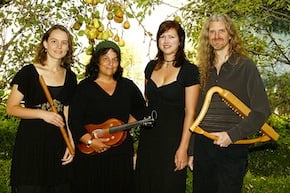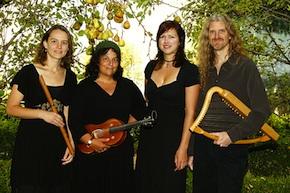
“On a warm summer day in July, 1518, in the ancient city of Strasbourg, an elderly woman named Frau Troffea stepped out of her front door and began to dance in the street. ... Thus began an episode of choreomania, the ‘dancing plague.’”
This evocative image opens the program notes for the upcoming concerts by Cançonièr, the Bay Area’s popular medieval ensemble. This group has quickly established a stellar reputation for blending scintillating performance with creative — and often dark — programming. Its latest concert follows in that path.
Cançonièr has imaginatively built a program around the strange phenomenon called choreomania, or “the dancing madness,” that centuries ago overtook groups of people throughout Europe. As recorded in old documents, sometimes it was only a handful of people, at other times it was huge droves, yet the symptoms were always the same: uncontrollable, frenzied dancing, which ended in exhaustion, physical collapse, and sometimes death. No social customs explained these dancing fits. The most common explanations in medieval records involve curses, particularly from Saint Vitus, because of his long association with dance rituals.
Music actually did accompany these outbreaks of hysteria; it was a sort of nascent music therapy, in which people untouched by the dancing illness would offer music to quell the spirits that burdened the dancers. Cançonièr will perform such “medicinal” numbers, as well as the dance music that may have occupied the dancers’ minds. Their selections date from the 11th through the 16th centuries.
This program promises to be as musically exciting as its programming is inventive. Cançonièr has a habit of selling out the house, so advance tickets are advised.

